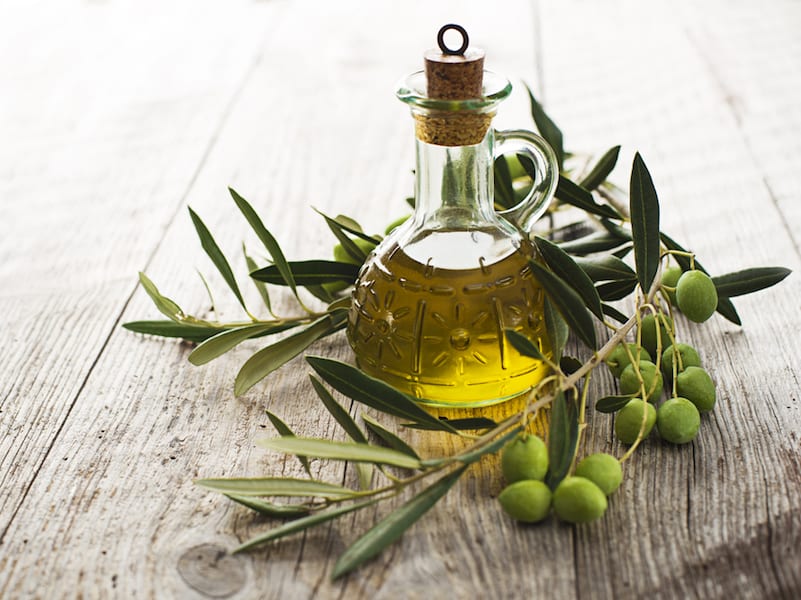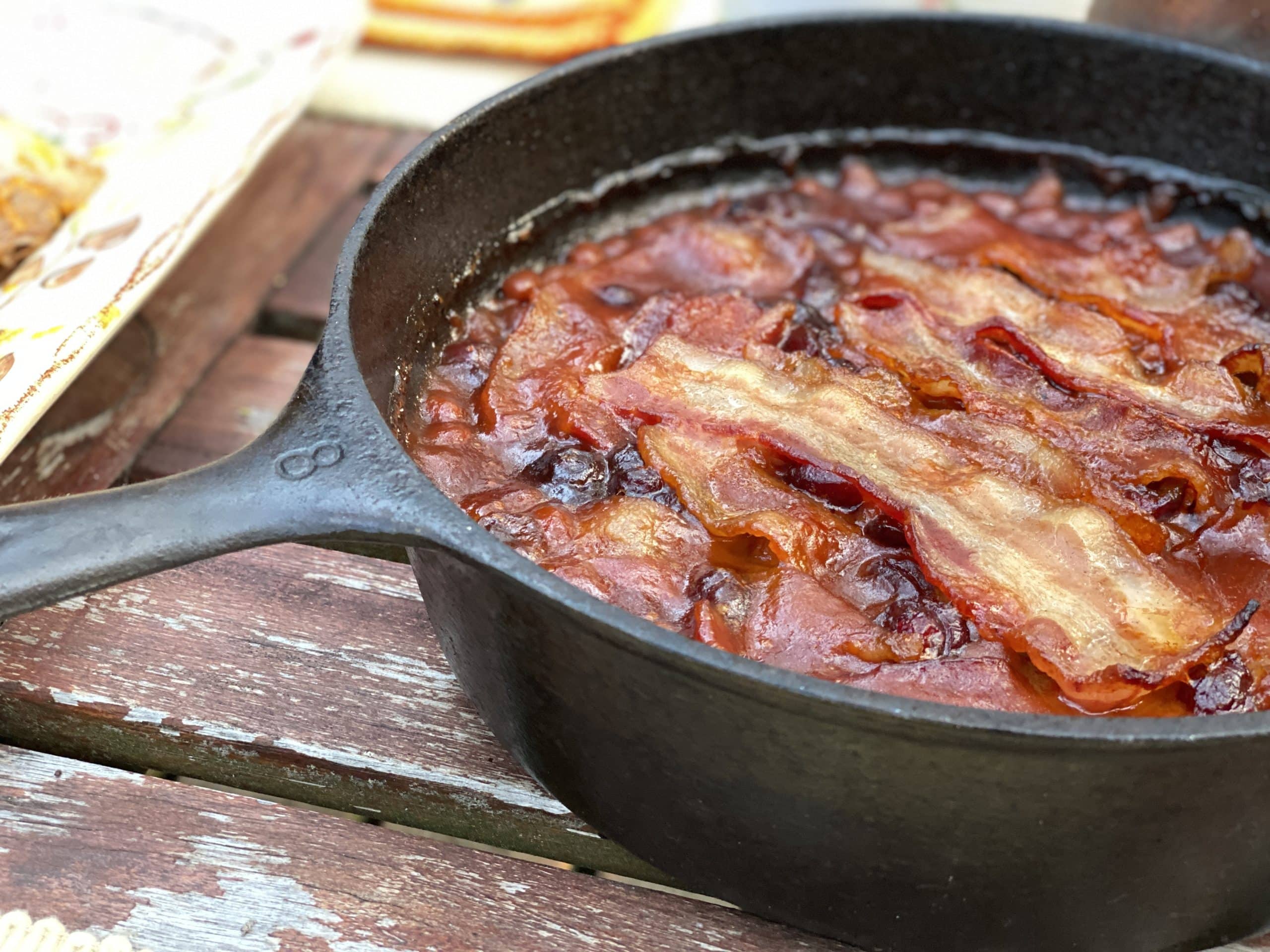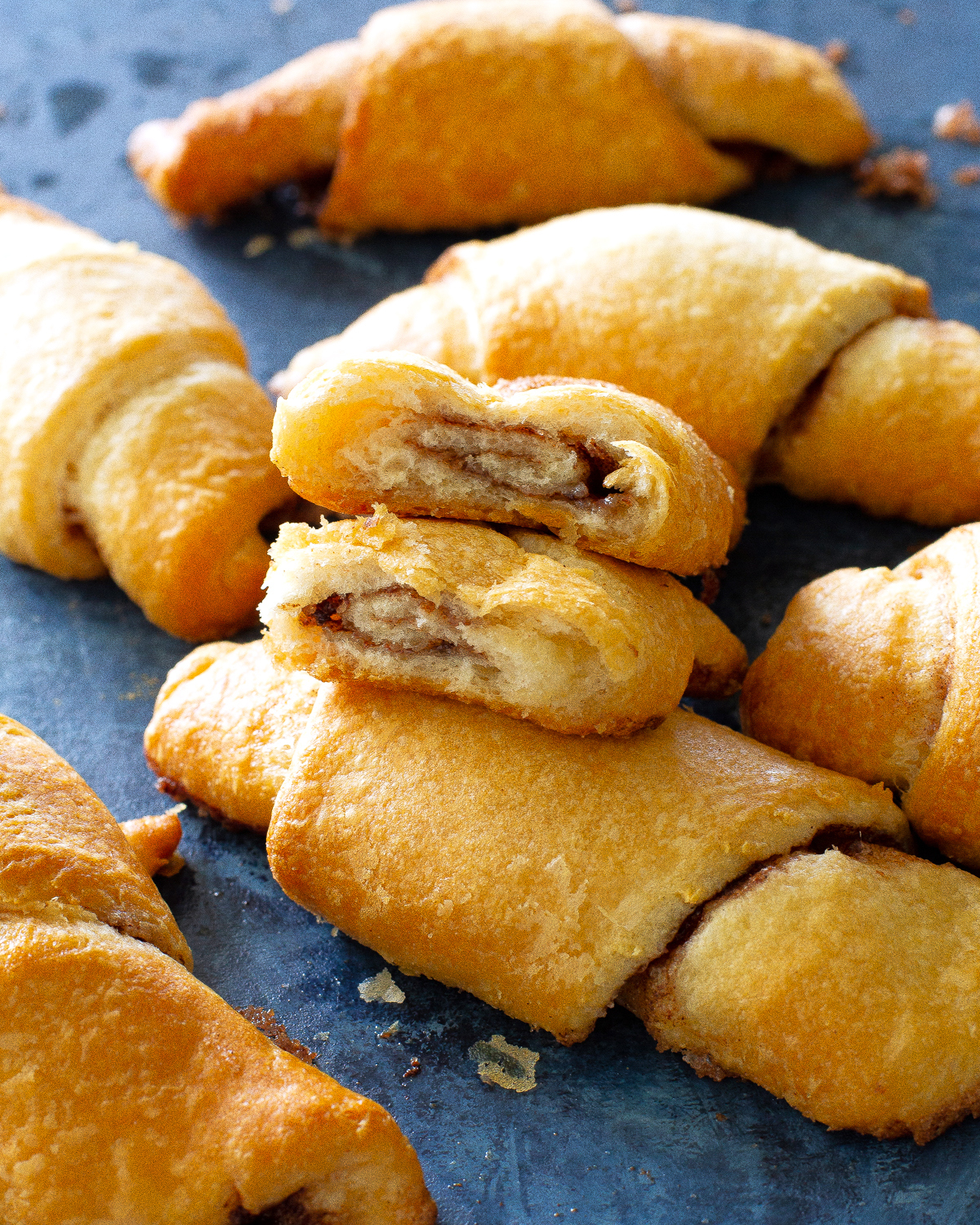Learn the history of the deliciously tender Florentine steak, and how to cook it at home. Grab some friends and dig in.
The Florentine T-bone steak (called Bistecca alla Fiorentina or simply La Bistecca) is a serious matter in Florence. Tuscan cuisine boasts many delicious dishes, but if you must choose only one, make it la Bistecca!
Florence, Tuscany; The night of San Lorenzo, August 10, sometime in the 16th Century. That is the night of the shooting stars, symbolizing the hot coals on which Saint Lawrence was martyred. Large braziers are placed around the Church of San Lorenzo. Huge quarters of beef cook slowly over the braziers. The Florentine people sit on benches, on the steps in front of the church, around the fire, eating large portions of meat, while butchers, acting as cooks, roast and slice more beef. Florence in the 1500s is rich and booming. The Medici family rules the city with a firm hand and bright intuition; their banking system brings lords and rich merchants from all over Europe. Here, history and legend intertwine: a group of rich British, attracted by the grand feast, sits next to the locals and bites into the meat. “Beef steak! Beef steak!” cry the English nobles, asking for more. From this hungry cry – beef steak! – the Italian term for the most famous Tuscan dish in the world was born: the Bistecca.
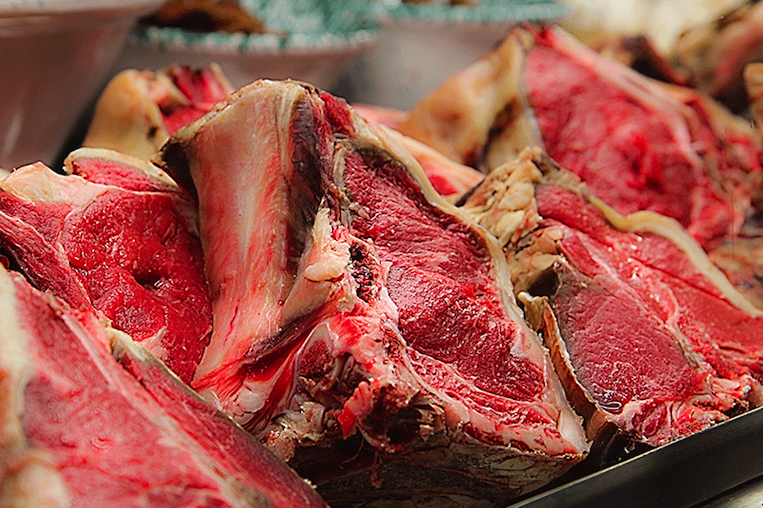
Cutting and Preparation
The Florentine steak is cut from the loin near the leg of the Scottona (a young female bovine that has never been pregnant, aged 15-16 months). The cut must include a “T” bone between the sirloin and the tenderloin. If it only includes the sirloin with the bone, it is called Costata and is cut from the loin near the shoulder.
For the meat to be tender and flavorful, it must be well-marbled, which is why the Scottona is ideal. The aging process is also crucial; the whole loin is hung for 15 to 21 days before cutting to ensure flavor and tenderness.
Cutting the Florentine steak is an ancient art in Tuscany. The minimum thickness for a proper Florentine steak is 1.5 inches, but the perfect cut is between 2 and 2.5 inches. The weight ranges from 1.5 to 4 pounds, but my favorite cut is 3 pounds, a nice feast to share with friends!
Breed Choice: Chianina or Not Chianina?
Many Italians believe that the Chianina breed is the only one suitable for a traditional Florentine steak. While Chianina produces excellent quality meat, many Tuscan butchers prefer other national breeds. Dario Cecchini, the most famous Italian butcher, even serves an excellent Florentine steak from Spanish cattle in his butcher shop/restaurant in Panzano.
Where to Eat the Florentine Steak in Florence
In Florence, most restaurants serve the T-bone Florentine steak, but results can be hit-or-miss. To ensure a great experience, I recommend some historic restaurants that prepare and cook “the Queen of the meats” traditionally. Among these, try “Trattoria Mario” near the Central Market, “I’Brindellone” in San Frediano, and “Perseus” near Piazza della Libertà. On my recent trip to Florence, I had a terrific Florentine steak at “Antico Ristoro di’ Cambi” in San Frediano and highly recommend a visit!
Cooking and Presentation
Here are a few tips to know if a restaurant is properly serving the Florentine steak:
- The restaurant should let you choose the piece of meat before cooking.
- The cook should not offer different cooking levels; the Florentine steak must be cooked and eaten rare!
In the past, the Florentine steak was cooked over embers. Nowadays, especially in cities, health regulations make this difficult. Cooking a Florentine steak begins by standing it on the bone base on a hot grill for about 15 minutes; this heats the bone, relaxing the fat fibers without cooking the meat. Once the interior is warm, the steak is placed on high heat and cooked for 5 to 7 minutes on each side, depending on thickness. The steak should be turned only once and must have distinct grill marks. Salt the meat only after cooking, using coarse salt to enhance flavor without being overpowering (discard the salt while eating). Before serving, let the Florentine steak rest for 10 to 15 minutes in a warm environment, like a heated oven that has been turned off, to allow the juices to redistribute.
Whether you enjoy Bistecca alla Fiorentina in Florence or the surrounding countryside, share the experience with friends due to the large portion. To fully enjoy the steak, pair it with a nice bottle of Chianti red wine and typical Tuscan sides like roasted garlic potatoes, spinach with Pecorino cheese, or Cannellini beans.
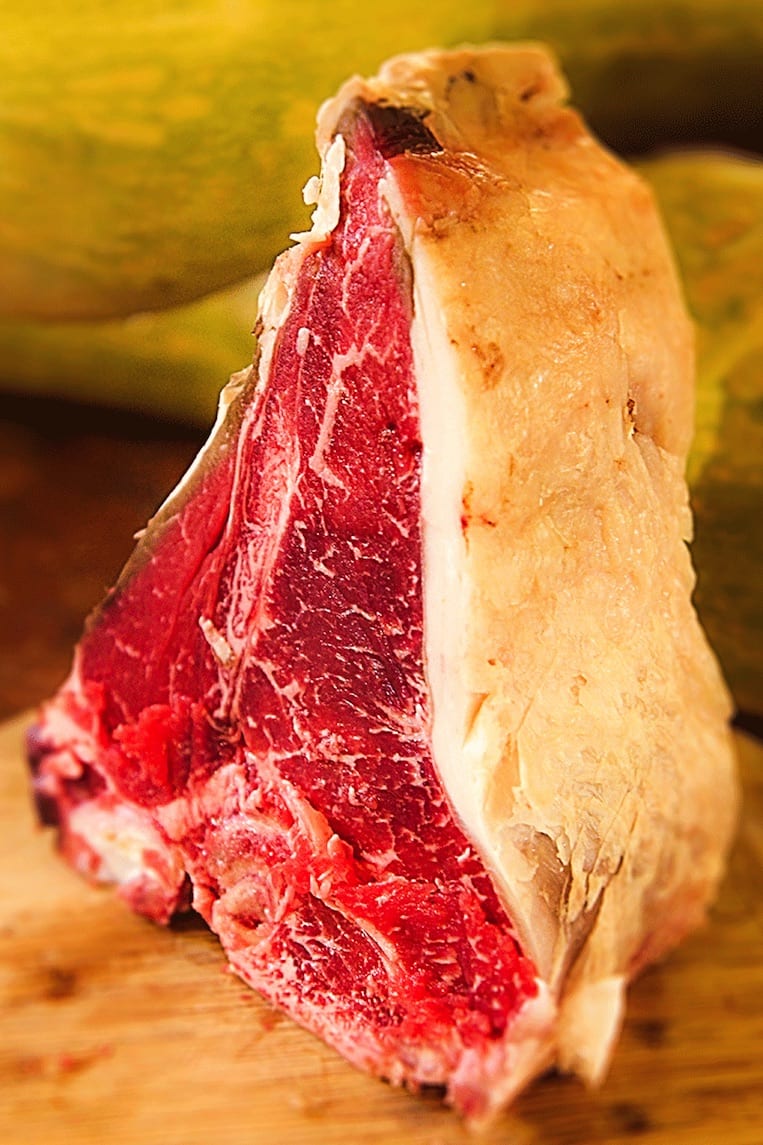

How to Make Bistecca Fiorentina at Home
If you want to try cooking the Florentine Steak at home, you first need to find the perfect cut for your beef-heaven-project:
Butcher Shops and Specialty Meat Markets
- Local Butcher Shops: Visit your local butcher shop and ask for a T-bone or Porterhouse cut. These cuts are similar to the Bistecca alla Fiorentina and come from the loin section of the cow, including both the tenderloin and the strip steak.
- Specialty Meat Markets: Specialty meat markets that focus on high-quality, artisan cuts often have T-bone or Porterhouse steaks. These places may also offer grass-fed or organic options.
- Online Meat Suppliers: Many online meat suppliers deliver high-quality cuts to your door. Websites like Snake River Farms, Crowd Cow, or Omaha Steaks offer T-bone and Porterhouse steaks. You can specify the thickness to match the traditional Florentine steak (1.5 to 2.5 inches thick).
Grocery Stores
- High-End Grocery Stores: Stores like Whole Foods or other high-end grocery stores often carry T-bone and Porterhouse steaks. You might need to ask the butcher at the meat counter to cut it to the desired thickness.
- Warehouse Clubs: Places like Costco or Sam’s Club frequently sell T-bone and Porterhouse steaks. Again, you may need to request a specific thickness if not readily available.
Tips for Finding the Best Cut
- Ask for Custom Cuts: Don’t hesitate to ask your butcher to cut the steak to the traditional thickness of 1.5 to 2.5 inches. This ensures you get a cut suitable for Bistecca alla Fiorentina.
- Look for Marbling: Ensure the steak has good marbling. This intramuscular fat contributes to the tenderness and flavor of the steak.
- Check the Breed: While Chianina beef is ideal, it’s rare outside Italy. In the US, you can look for high-quality beef breeds like Angus or Wagyu, which are known for their excellent marbling and flavor.
Step-by-Step Guide
Dry Hanging
- Dry Hanging Preparation:
- Butcher Preparation: Ideally, ask your butcher to dry hang the steak. This process involves resting the entire loin in a cool and dry place before cutting.
- Home Preparation: If you need to do this at home, wrap each steak in a single layer of cheesecloth. Place them well separated on a rack in the lower part of the refrigerator for up to 4 days. Change the cheesecloth once a day.
- Inspect the Meat: Before cooking, examine the meat. It should be darker and have a stronger smell, but should not have an ammonia smell, which indicates improper maturation.
Cooking the Florentine Steak
- Prepare the Grill:
- Traditional Method: Use a grill with coal or wood embers if possible.
- Alternative Methods: An electric grill, cast iron griddle, or soapstone griddle also work well.
- Heat the Grill: Heat the surface very well to ensure it is hot enough to cook the steak properly.
- Warm the Interior: Stand the steak on the bone to warm the interior and soften the fat fibers. Do this for 15 minutes.
- Sear the Steak: Increase the heat to a very high temperature. Sear the steak for about 5 minutes per side without moving the meat. The goal is to roast the surface well without burning it. Adjust the temperature according to the tools available.
Relaxing the Steak
- Rest the Steak: Let the steak rest in a warm place, such as a hot oven preheated to 100°F (37.8°C) and then turned off, for about 10-15 minutes. This allows the meat fibers to relax and the juices to redistribute, retaining the flavors.
Serving
- Season and Serve: Before serving, sprinkle the steak with cooking salt. Serve immediately and prepare for a feast!
Recipe Notes
- Dry Hanging Tips: If doing at home, ensure the refrigerator is set to a consistent temperature and humidity is controlled to prevent spoilage.
- Cooking Surface: Using a cast iron griddle or soapstone griddle can help achieve even heat distribution and a perfect sear.
- Resting: Do not skip the resting step, as it is crucial for tender and juicy meat.
Recipe Details
- Yield: 4-6 servings
- Prep Time: 4 days (dry hanging)
- Cook Time: 40 minutes
- Cooking Method: Grilling
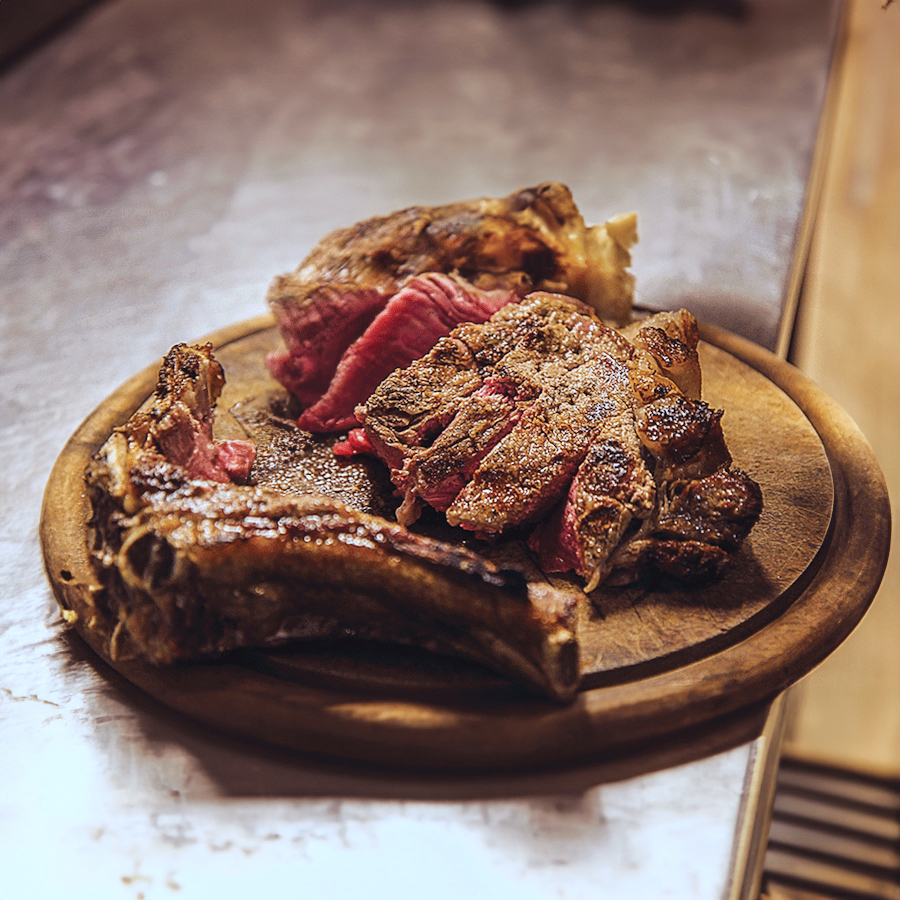

Description
Learn the history of the deliciously tender Florentine steak, and how to cook it at home. Grab some friends and dig in.
Dry Hanging
- Dry Hanging Preparation:
- Butcher Preparation: Ideally, ask your butcher to dry hang the steak. This process involves resting the entire loin in a cool and dry place before cutting.
- Home Preparation: If you need to do this at home, wrap each steak in a single layer of cheesecloth. Place them well separated on a rack in the lower part of the refrigerator for up to 4 days. Change the cheesecloth once a day.
- Inspect the Meat: Before cooking, examine the meat. It should be darker and have a stronger smell, but should not have an ammonia smell, which indicates improper maturation.
Cooking the Florentine Steak
- Prepare the Grill:
- Traditional Method: Use a grill with coal or wood embers if possible.
- Alternative Methods: An electric grill, cast iron griddle, or soapstone griddle also work well.
- Heat the Grill: Heat the surface very well to ensure it is hot enough to cook the steak properly.
- Warm the Interior: Stand the steak on the bone to warm the interior and soften the fat fibers. Do this for 15 minutes.
- Sear the Steak: Increase the heat to a very high temperature. Sear the steak for about 5 minutes per side without moving the meat. The goal is to roast the surface well without burning it. Adjust the temperature according to the tools available.
Relaxing the Steak
- Rest the Steak: Let the steak rest in a warm place, such as a hot oven preheated to 100°F (37.8°C) and then turned off, for about 10-15 minutes. This allows the meat fibers to relax and the juices to redistribute, retaining the flavors.
Serving
- Season and Serve: Before serving, sprinkle the steak with cooking salt. Serve immediately and prepare for a feast!
Notes
- Dry Hanging Tips: If doing at home, ensure the refrigerator is set to a consistent temperature and humidity is controlled to prevent spoilage.
- Cooking Surface: Using a cast iron griddle or soapstone griddle can help achieve even heat distribution and a perfect sear.
- Resting: Do not skip the resting step, as it is crucial for tender and juicy meat.
- Prep Time: 20 mins
- Maturing Time: 4 days
- Cook Time: 35 mins
- Category: Main, meat, Secondi, steak
- Method: Grilling
- Cuisine: Italian

